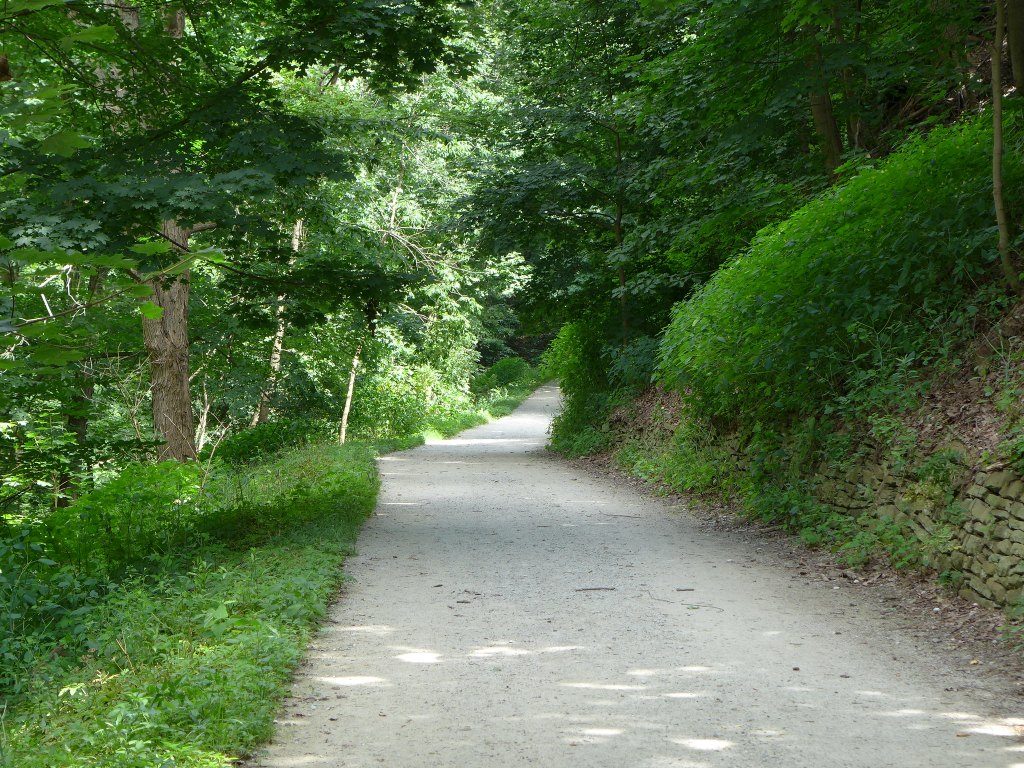
3 July 2019
If you were out in the UK today, this will not be hard to work out. Infrared shows the temperature difference between areas with trees, and those without. Thanks to Meg Caffin and the City of Geelong, Australia, for the insight. This is what’s coming and we’re not ready for it! pic.twitter.com/N5PrCvIhYB
— Jeremy Barrell (@JeremyDBarrell) June 29, 2019
It’s been hot in Pittsburgh lately but nothing like the heat wave that’s sweeping Europe with highs above 100 degrees F. @JeremyDBarrell tweeted a long term solution with a compelling image by Meg Caffin.
Meg Caffin is an urban forest consultant from Australia who provides guidance for cities looking to beat the heat. Her image at top used an infrared camera to show the temperature difference between a paved churchyard and the trees behind it. I’ve made a Fahrenheit translation below. Yes, it’s 113oF on the pavement and only 77oF under the trees.
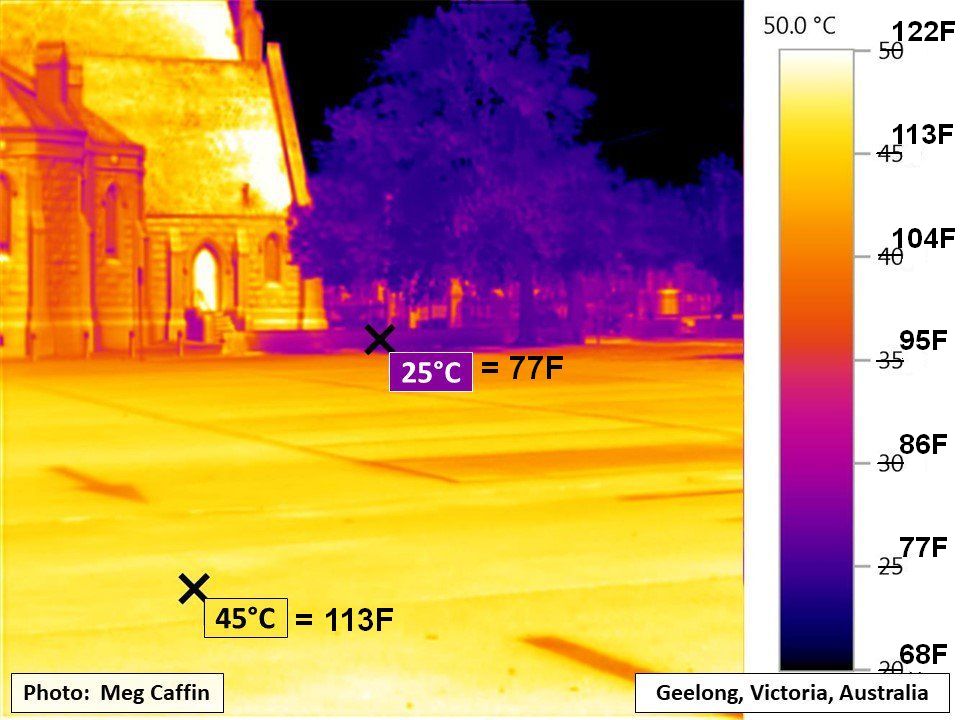
Tree shade is cooler than building shade because buildings merely block the sun while the trees actually lower the temperature.
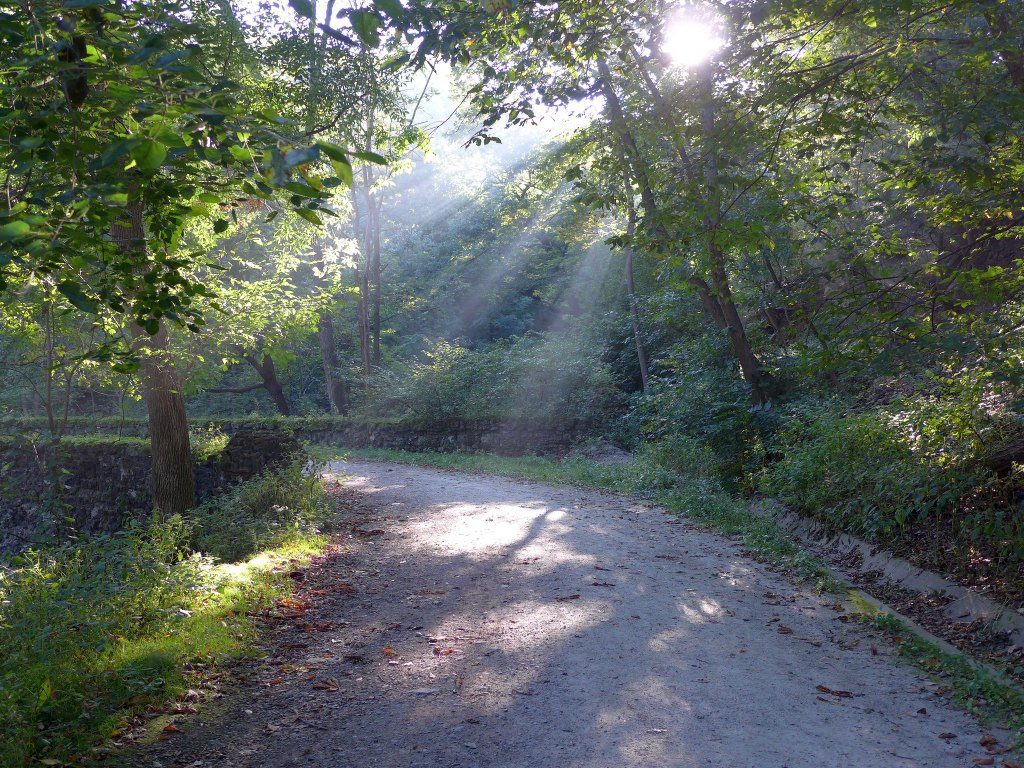
Trees cool the air by transpiring. They take up water from the ground and release it from the stomata in their leaves. The release doesn’t usually drip from the leaves as shown below. Instead it evaporates and that’s what cools the air.
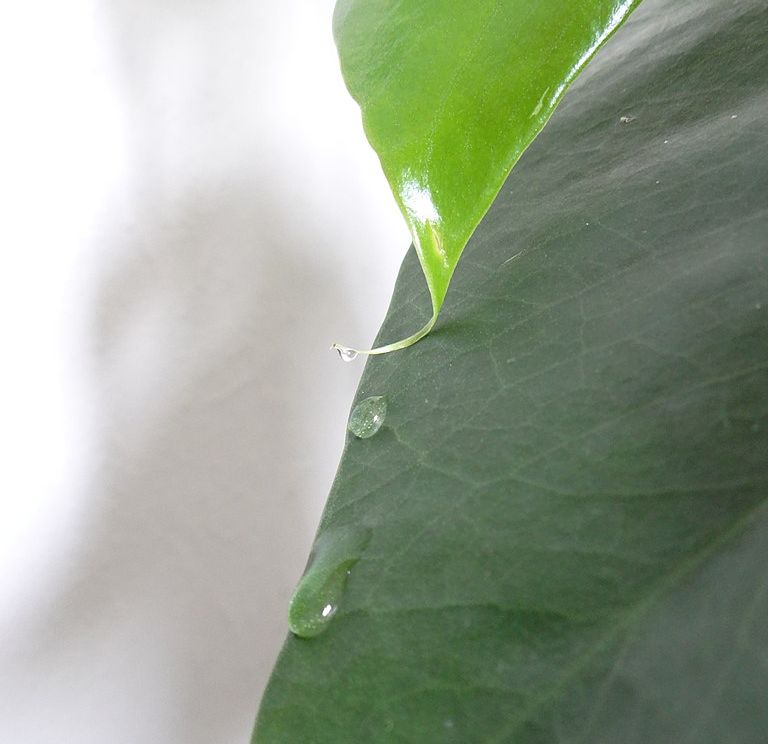
Evaporation — changing a liquid to a gas — uses energy. According to the Transpiration blog, “Energy is absorbed into liquid water. This reduces the temperature of the surrounding plant tissue and nearby atmosphere. To evaporate 1 gram of water 590 calories of energy is required.”
So more trees mean less heat.
If that isn’t enough reason to like trees, here’s another benefit. Trees increase your property value as shown in the EPA cost-benefit analysis below.
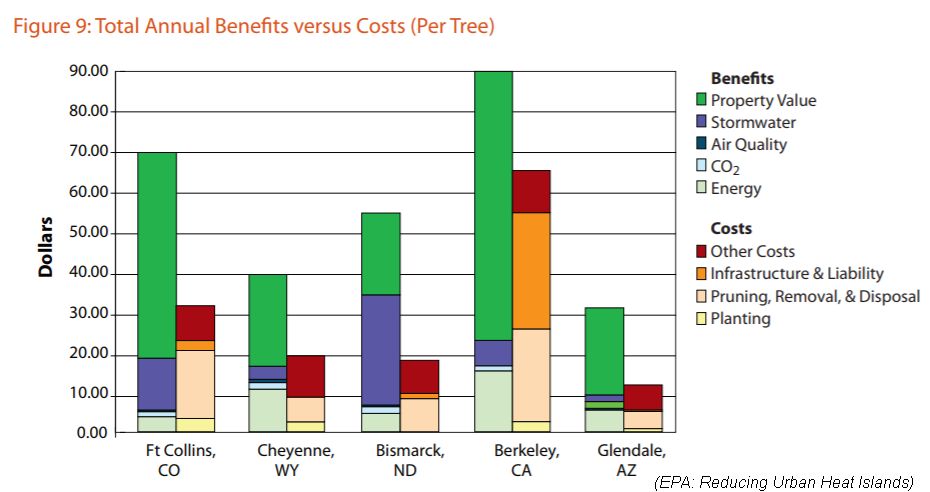
Plan to plant a tree this fall or plan to keep one. It’s cheaper to keep an existing tree than to plant a new one and mature trees increase property value even more.
Meanwhile if you’re feeling hot right now, visit a local park. Beat the heat among the trees.
(embedded Tweet from Jeremy Barrell; infrared heat image by Meg Caffin for the City of Geelong, Australia (Fahrenheit added); transpiring leaf from Wikimedia Commons; photos of Schenley Park by Kate St. John)